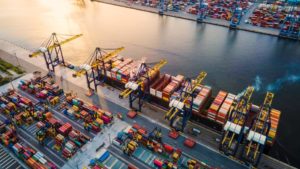
Over the last several decades, technology has been at the forefront of competitive advantage in supply chain management. Retail and consumer goods companies, for example, have invested in supply chain management to automate supply chain operations by implementing solutions such as ERPs, RPA and robotics systems. In more recent years, there has been a push to automate supply chain systems to build on the previous advancements.
In this article, I will examine four ways those working in the global supply chain will build on these trends and how they may adapt to new and existing challenges in the coming year.
Increased Adoption Of Demand Sensing And Inventory Planning Capabilities
One thing the pandemic laid bare for D2C, retail and e-commerce companies was that traditional demand planning and forecasting models were weak links in their business models, meaning companies will need to have better ways to predict what will happen next and find new ways to respond quickly to consumer demands.
According to the 2021 Gartner Future of Supply Chain Survey, 43% of enterprises will take steps to integrate innovative technologies into their systems. Demand sensing and inventory planning platforms may comprise a major part of this effort, as companies react to the changing consumer dynamics and social and cultural realities.
Emphasis On Environmental And Social Sustainability
Sustainability is determining the balance between consumption, growth and development. Under this lens, sustainable supply chain planning is geared toward economic success while ensuring environmental and societal preservation. Many of the world’s largest companies have committed to sustainable development goals and have formulated plans to meet their commitments. Supply chain planning is one of the essential ingredients for companies to meet the 2030 agenda.
While managing human, natural and financial resources, sustainable supply chains will have to find a trade-off between economic, environmental and social dimensions, simultaneously. Because of this, prepare for companies to invest in better inventory storage for product longevity, circular supply chain, environmentally friendly packaging and sustainable transportation networks in 2023.
Macroeconomic Risk Management
It’s no secret that in the face of global instability, trade disputes and geopolitical realignment, global supply chains are going through material shortages throughout the world. Supply chain leaders will have to build robust risk identification, assessment and mitigation processes for an agile and resilient supply chain.
Companies should invest more in diversifying their supplier pool by incorporating analytics for supplier selection based on supplier financial stability, supplier yields, lead time and cost. Moreover, building a risk-aware culture throughout the company will help in building defensive what’s-next strategies. Companies may also continue investing in control tower capabilities to ensure transparency throughout the supply chain, allowing for warning signs of risks to be openly shared to be acted upon.
Flexible Workplace
The pandemic made clear the dependency of traditional supply chain operations on on-site talent and the need to build work experiences that enable flexibility around where the work gets done. Supply chain leaders must manage employee expectations and experience as hybrid working models become more common.
They will have to invest in technologies and training for their supply chain workers to adapt and evolve their skills for a more hybrid, flexible and technologically enabled workplace. Such investments will aid in easier operational execution while making physical processes less differentiating.
Conclusion
2023 is more than likely going to be another turbulent year for global supply chains, and most companies are aware. Investment in key technologies and processes is the only way to ensure resilient and agile supply chains. Visibility into demand patterns, supplier selections, talent workplace engagement and risk management are going to be the top avenues where companies can secure a competitive advantage.
Source: Forbes



